Hello all,
Today I will continue my overview of the Greek Islands, with the costumes of the Saronic and Dodecanese islands.
The Saronic, or Argosaronic islands are a group of islands found in the Saronic Gulf, between Attica and Argo, and often including those just off the coast of Argo.
This is the largest of the Argosaronic islands, lying just off the coast of Athens and Megara. Salamis was acquired by Athens from Megara around 600 BC. It was the location of the decisive victory over the Persians in 480 BC. It was also known for being the birthplace of Ajax and Euripedes. The costume of Salamis is particularly elaborate, with beadwork, gold embroidery and jewelry.
Dance of Salamis
Woman's dance of Salamis
Aegina Αίγινα
This is also a fairly large island and lies in the center of the Saronic Gulf. A large number of valuable Mycenaean artifacts have been discovered on the island, which date to about 1600 BC. Coins imprinted with turtles were minted on the island at an early date, which is evidence that it was a center for trade, being located between Attica and the Peloponnese. Aegina carried on hostilities with Athens over sea power for many years. In the middle ages, like so many of the islands Aegina fell under the control of the Catalonians, and then the Venetians. I have found only a couple of images of the costume of this island.
Dance from Aegina. This is the Aegina dance group. They seem to be wearing costumes from Psara, however.
Poros Πόρος
Poros lies very close to the shore of the Peloponnese. It is a very fertile island covered with greenery. In ancient times the island was home to two city states, Sphairia and Calauria. In spite of it being an island, the men on Poros wore the foustanella, and not the Vraki. The women's costume is similar to that of the mainland as well. The costume disappeared early. This first image is the only one that is definitely from Poros.
Hydra Ύδρα
This island is located off the tip of the Argolid Peninsula, between the Saronic and Argolic Gulfs. Today the island is a car free zone, so transportation is only by foot, bicycle or donkey. The island had through much of history suffered greatly from pirates. Hydras shipping and trade was in the middle ages hampered by the constant strife between the Venetian and Ottoman Empires. Hydra was originally named for the abundance of springs and wells on the island. Today, most have run dry, and the island has to import water. The costume is obviously much influenced by urban costume on the mainland, and has some similarity to the Amalia costume.
Spetses Σπέτσες
This island is found to the west of Hydra, at the entry of the Argolian Gulf. In ancient times it was called Pityoussa. The current name is derived from the Italian word for spices. The old town is closed to vehicular traffic, although ferries arrive daily from the Piraeus. Archaeological finds show that the island has been inhabited since the Mesolithic, 8000 BC. The island was a busy transshipping center already in 2300 BC. Merchant fleets were centered on the island in the 18th and 19th centuries. The island fleet was also instrumental in the Greek Revolution. The costume of the island is also of the mainland urban type, and is similar to that of Hydra.
A dance from Spetses
Another dance from Spetses
The Dodecanese Δωδεκάνησα
This term literally means 'the 12 islands'. There are in fact 15 major islands, and many small ones. A total of 26 islands are inhabited. They are located to the east of the Cyclades, and are scattered off the coast of Asia Minor, south of Ikaria and Samos, and east of Crete. This name stuck to this group during Ottoman rule, when they very publicly struggled to maintain their traditional privileges under the law. In 1912, they became part of Italy's late attempt at an Empire. They finally became part of Greece in 1947, after WWII. I shall proceed roughly north to south.
According to myth, this island was raised from the sea by the joint efforts of the goddesses Selene and Artemis, with help from Apollo. The Patmians were apparently Dorians, with some admixture of Ionians. This island is where the apostle John wrote the book of Revelations.

There are old drawings of a costume from this island.

This is an hour long video of a dance performance on Patmos. Many of the young girls are wearing a costume from Rhodes. The adult dancers are wearing a simplified Patmos costume. They come on at the 1630 mark.
Lipsi Λειψοί
This group of islands lies east of Patmos. Also spelled Leipsoi. They are known for thyme honey and the local cheeses. Also a number of Churches and beaches. These first images are from a holiday procession.
In this image, the second woman in line [3rd person] is wearing the Kalymnos costume.
A video of dance from Lipsi. Video quality is poor, but both music and dance are excellent.
Another video with better visual quality. Some of the women are wearing Kalymnos or Rhodes costumes.
Agathonisi Αγαθονήσι
This small island lies east of Lipsi, close to the mainland. The population is very small. Here are just a couple images from Agathonisi.
Leros Λέρος
Leros is the next island in the chain, located south of Lipsi. It was instrumental to the Athenians during the Peleponesian War, but belong to Sparta afterwards. Later, local pirates held Julius Caesar hostage for 40 days. Like the rest of this group, this island fell under the Venetians, the Ottomans, and Italy before once again becoming part of Greece. The costume consists of bloomers, chemise and kaftan, resembling those of Kalymnos and Kos, sometimes with a jacket.
These ladies are from Leros and Kalymnos.
Dances from Leros. In the first two videos, the ladies are wearing a newer costume where the kaftan is replaced by a dress.
Couple dance on Leros.
The Slovenian broom dance somehow found its way to Leros. They are, however wearing the traditional kaftan while doing the polka.
Kalymnos Κάλυμνος
This island lies south of Leros. It was inhabited by Carians before being settled by Hellenes. The main line of history is in line with the rest of this group of islands. It is a center of the sponge diving trade. The costume of this island is very well documented. It consists of a chemise, poukamiso, sometimes worn over bloomers. Over this a kaftan is worn, with a many striped sash. When attending Church, both front fields are left down. Otherwise, one is tucked into the sash to show off the embroidery on the poukamiso. When working, sometimes both were tucked up out of the way.
A performance demonstrating wedding customs.
Kos Κως
Kos is a relatively long, large island, lying south and a bit east of Kalymnos. The island is first mentioned in the Iliad. It was a center of worship for Asclepius, having a number of sanatoria. Hippocrates was born on Kos. Besides this, the island was known for production of wine, and by the time of Aristotle, of silk. During the Hellenistic Age, it had a branch of the library of Alexandria, and a medical school. During the Roman era, it also was home to a library. Under the Knights Hospitallers, when they were located in Rhodes, it was sometimes known as Lango, because it is long. The costume is similar to those of Kalymnos and Leros, consisting of bloomers, a chemise, and a kaftan. The chemise is shorter than that of Kalymnos, and the sash is shorter and simpler, although sometimes replaced by a costly belt.
Another couple performances
Astypalaia Αστυπάλαια
This island lies south and quite a bit west of Kos. It is the westernmost of the Dodecanese. It is named after a sister of Europa who was taken by Poseidon in the form of a fish tailed winged leopard. She bore two sons by him who became the kings of Kos and Samos. Like the neighboring islands, this island was part of the Roman, Venetian, Ottoman and Italian Empires. The costume is quite elaborate, and is similar to those of Nisiros and Tilos. There is a great deal of embroidery on the full chemise. There are 4 forms of the costume which are mentioned in the records. The full festive costume and the everyday rich family costume are distinguished by embroidery and the dress worn over the chemise. There used to be 2 more simpler forms worn by common women, but the details of these have been forgotton.
A video showing the Astypalaia costume.
Performance of Astypalaia dances. The actual dancing starts at the 200 mark.
Nisyros Νίσυρος
This island is in the main chain of islands, south of Kos. Also spelled Nisiros. It is an active volcano, although quiescent at the moment. According to mythology, Poseidon made this island by cutting off a piece of Kos and throwing it on top of the giant Polybotes. I suppose this explains why the island rumbles from time to time. There was a millstone quarry on the island in ancient times. The Knights Hospitallers built a castle there. Otherwise the history is the same as the rest of the Dodecanese. The costume is similar to that of Astypalaia, but not quite as elaborate.
Photo montage of Nisyros, with traditional dance music played over it.
Tilos Τῆλος
This island is the next one south in the chain. It is popularly said to be named after a man named Tilos who was the son of Helios and Halia, who found herbs to heal his mother on this island and later founded a temple there. The remains of dwarf elephants have been found on this island, dating to the paleolithic. In the classical era, this island was known for clothing and perfumes. 5 castles are found on the island, dating from the middle ages. Politically, this island fared the same as the rest of the Dodecanese in the last few hundred years. The chemise is similar to that of Astypalaia and Nisyros. Over this is worn a linen dress, and at times a black kaftan.
Sousta from Tilos
Symi Σύμη
Symi lies east of Tilos, quite close to the coast. Also spelled Simi. This island has been continuously inhabited since antiquity. Sponge fishing and ship building were major trades here until recently, but now the island relies primarily on tourism. The men from this island were involved in the Trojan and Peloponnesian wars. According to mythology, the Three Graces were born on this island. The costume is elaborate, and shows much oriental influence
Here we see the costume of Kos on the left, and that of Symi on the right.
Dances from Symi. Here the dancers are quite good. The women are all wearing the same form of the costume, however.
Dance from Symi. Here they are only doing one simple dance. The women, however, are wearing several different forms of the local costume.
Chalki Χάλκη
Chalki is a small island which lies southeast of Tilos and west of Rhodes. There is not much information available. Many people in the 20th cent emigrated to Tarpon Springs, Florida. The few images which I have found indicate an old costume and a new costume.
Old
New
Rhodes Ρόδος
This is the largest of the Dodecanese by a large margin. It is located east of Chalki and south of Symi. It was the site of the famous Colossus of Rhodes, one of the wonders of the ancient world, which has not survived. The medieval old town of the city of Rhodes is a World Heritage Site. The name of the island comes from the Greek word for Rose, and is also known as the island of roses. Rhodes was always an important strategic location, from the Greeks, Persians, Romans, Venetians, Knights of St. John, Ottomans, Italians, etc. The island has several costume traditions, but most are little used today. The costume which is almost always seen is that of three villages on the west side of the island, Krytynia, Mandriko, and Emponas [Embona]. I will show only this costume, and I will explore the others in a future posting.
Rhodes dances, Tourtsikos-Monakhiki and Sousta
Same performance, Kritikos
Procession in Embona on Greek Independence day.
To give just a taste of the other costume traditions, here is a dance group from the village of Soroni in the north, doing a series of dances.
Karpathos Κάρπαθος
This is the second largest of the Dodecanese, and is located southwest of Rhodes, about halfway to Crete. It lies on the edge of the Greek Island area. The Karpathians participated in the Trojan war, and hosted the Argonauts. They sided with Sparta in the Peleponnesian war, and were conquered by Rhodes in 400 BC. The rest of their history is the same as the Dodecanese in general.
There are four costumes associated with Karpathos. The old costume seems to have consisted of simply an extremely heavily embroidered chemise.
Two are still worn in the village of Olympos, and generally represent Karpathos. The first consists of a chemise, a kaftan, the kavai, a distinctive apron, and a shawl ornamented and wrapped in a specific manner.
In the second form of the costume, the kaftan is replaced by a blouse and skirt modelled after the apron. This was a 20th cent innovation, was at first limited to unmarried girls, and may be rather gaudy.
Here is a rare photo of the everyday version of this costume.
And like in most places, older women tend to wear simpler and darker clothing.
The fourth costume is worn for dances and festivals in the central and southern parts of the island, around the capitol, Pigadia. It is based on urban Greek fashions of the 19th century, and locally is called vesta.
A stage performance of Dances from Olympos.
A video of an actual night of dancing in Olympos.
Here is a dance from Karpathos done in the vesta costume.
Kasos Κάσος
This is a small island and lies to the southwest of Karpathos. It is the southernmost Greek island, except for Crete, which does not technically lie in the Aegean. The island was originally inhabited by the Philistines, then the Minoans, Achaians, Hellenes, and was thereafter passed from Empire to Empire. The men on Kasos traded widely in their ships.
The costume of Kasos resembles the vesta from southern Karpathos. It was a one piece dress or a two part top and skirt. Made of cotton print for everyday, or sumptuous fabrics for dress.
Kastellorizo Καστελλόριζο
This is the last of the Dodecanese. It is found 78 miles east of Rhodes, and lies close to the mainland. Also called Megisti; Μεγίστη. It is the easternmost Greek island, except for Cyprus. The name likely comes from the Italian Castello Rosso, or Red Castle. It is the smallest of the Dodecanese. The history of the island closely follows that of Rhodes, the Knights of St. John having built a castle there. Despite being a small island the costume tradition is rich and elaborate, with patterned fabrics, gold couching, and fur trim. One unusual feature of the costume is the large fringed Spanish or Chinese shawl worn over the head.
And that is the end of this series. I will likely do some articles focusing on details of individual costumes. Thank you for reading. I hope that you found this to be interesting and informative.
Just a couple more videos.
A festival of Dodecanese dances. Here you will see a line of dancers from Leros, with others from Patmos and Tilos visible in the background.
The same festival. In the beginning we see dancers from Astypalaia, then the camera moves on to watch the dancers from Patmos, and then Kalymnos. Other dancers from Tilos, Embona Rhodes and Leros are visible in the background.
Roman K
email: rkozakand@aol.com
I would like to say that I found various articles in the Rhodian online newspaper I Rodiaki to be very helpful.















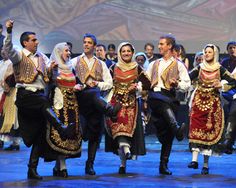












































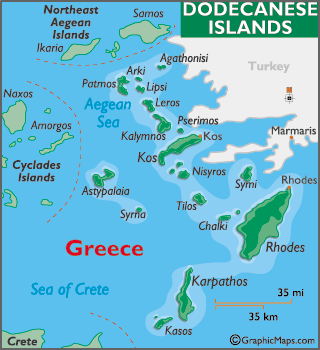
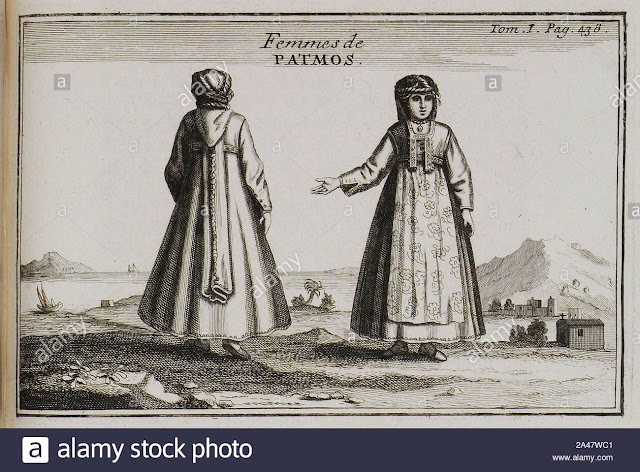













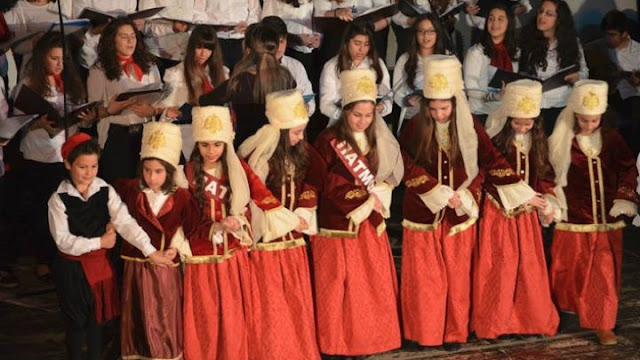




















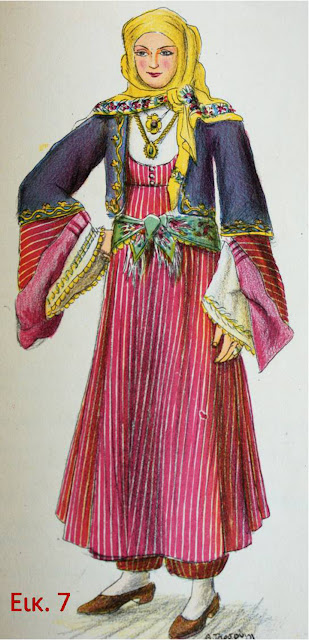
























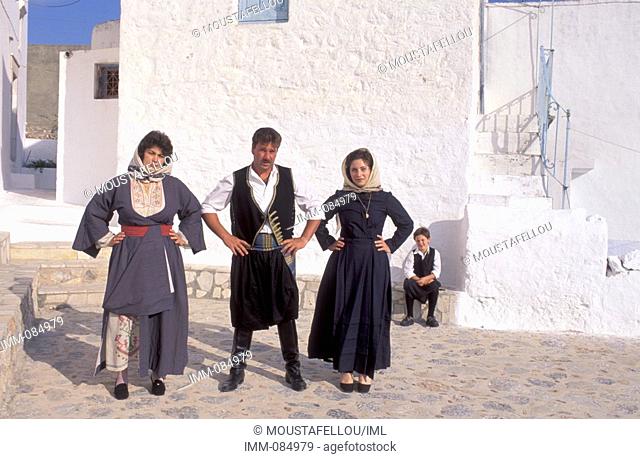































































































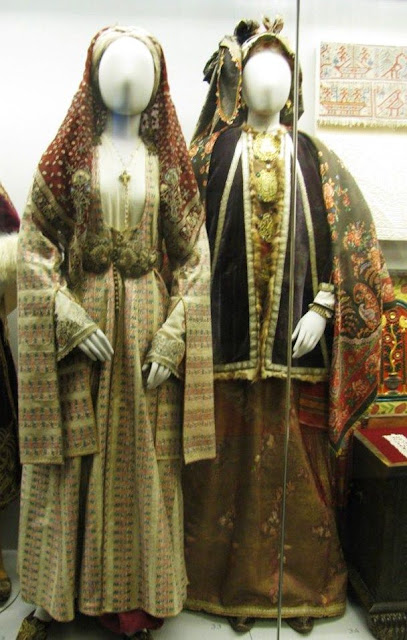



















































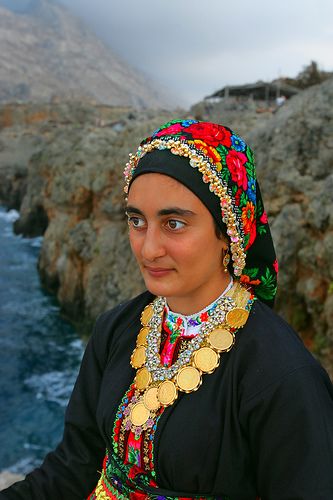




















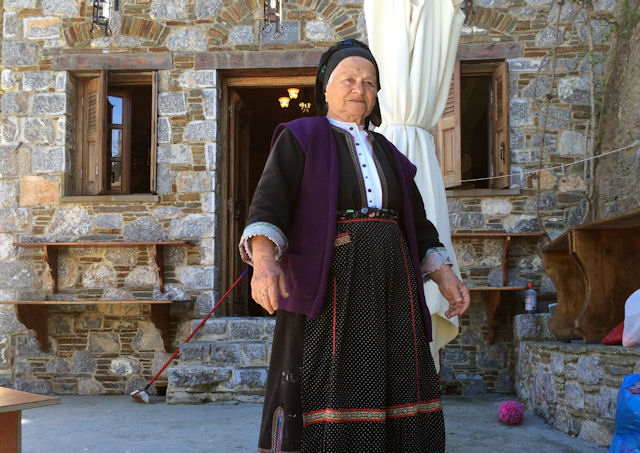































Absolutely Beautiful! Loved every folk costume and can't say I have ever seen anything like this before. Appreciate your fine mastery of research and efforts put forth Roman! thank you.
ReplyDeleteThis comment has been removed by the author.
ReplyDeleteExploring the costumes of the Greek Islands, particularly those found in the Saronic and Dodecanese Islands, is like embarking on a visual and cultural odyssey. These traditional garments are not just clothing; they are living artifacts that tell the stories of their wearers and the regions from which they originate.
ReplyDeleteThe rich tapestry of fabrics, colors, and designs in these costumes reflects the unique histories and traditions of each island. They are a testament fellowshippersonalstatement.com to the skill and artistry of the people who crafted them, often using techniques passed down through generations.
Studying and sharing an overview of these costumes is a means of preserving and celebrating this cultural heritage. It's an opportunity to honor the artisans, the wearers, and the communities that have upheld these traditions for centuries.
Moreover, the costumes of the Greek Islands are not static relics but a living connection to the past. They continue to be worn in various cultural events, festivals, and celebrations, reminding us that tradition and modernity can coexist harmoniously.
Master Papers https://us.masterpapers.com/blog/factual-essay has officially become my go-to source for all things factual essay! Their blog on factual essays is a goldmine of tips and tricks. I love how they simplify complex concepts and provide real examples to drive the points home. Seriously, bookmark this if you want to up your essay game!
ReplyDeleteCollege essay writing services can be valuable tools to help you succeed academically. By considering factors like quality, originality, timeliness, customer support, and revisions, you can make an informed choice when selecting a service: rewritemyessay.us. Remember that using these services for guidance and learning is ethical, but submitting someone else’s work as your own is not. Choose wisely, and your college writing experience can become more manageable and less stressful.
ReplyDeleteIn the pursuit of crafting my research proposal, I embarked on a journey through the diverse landscape of academia. Along this path, I discovered a wealth of resources: https://www.phdresearchproposal.org/engineering-research-proposal-topics/ that became invaluable companions in shaping my ideas. From scholarly articles to collaborative dialogues, each interaction deepened my understanding and propelled me towards academic excellence. This expedition emphasized the significance of shared knowledge and community support in navigating the scholarly terrain, reinforcing my dedication to scholarly exploration and collaboration."
ReplyDeleteAs I journey deeper into CapstoneProject.net, I am consistently amazed by the breadth of resources available for amateur enthusiasts like myself venturing into capstone project help writing. Each discovery I make adds a new layer of insight and equips me with practical skills to navigate this dynamic field. The platform's user-friendly interface ensures seamless navigation, enabling me to explore diverse topics and refine my expertise effortlessly. With CapstoneProject.net as my trusted companion, I eagerly embrace the opportunities for growth and learning that lie ahead in the world of capstone projects.
ReplyDeleteLooking back on my academic path, I am deeply appreciative of the invaluable assistance provided by PhDResearchProposal.org. Their expertise and personalized support have been instrumental in refining my research proposal to meet rigorous academic standards. I wholeheartedly recommend their services to fellow scholars embarking on their own phd research proposal help. With PhDResearchProposal.org, the journey from idea conception to polished proposal is characterized by professionalism, collaboration, and a commitment to scholarly excellence.
ReplyDeleteSchools play a pivotal role in shaping individuals and societies, serving as hubs for education, personal growth, and socialization. Essays on school delve into various aspects of the educational experience, including curriculum design, teaching methodologies, and the impact of school writing residency personal statement environments on students' academic performance and well-being. They analyze challenges and innovations in education, aiming to enhance learning outcomes and promote equity. Through essays, educators, researchers, and policymakers reflect on strategies to improve educational practices and create inclusive and supportive learning environments. School essays offer insights into the dynamic nature of educational institutions and their profound influence on individuals and communities.
ReplyDeleteShahid Saleem's work is a cornerstone in the academic support landscape. His reviews offer more than just evaluations; they provide a comprehensive framework for understanding and navigating academic resources. Through his meticulous analysis and commitment to ethical standards, Saleem empowers students to achieve their academic goals with confidence and https://www.linkedin.com/pulse/top-5-places-buy-essay-grades-shahid-saleem-shctf/. His contributions foster a culture of excellence, critical thinking, and continuous improvement, leaving a lasting impact on the academic community. As students, educators, and service providers continue to benefit from his insights, Saleem’s legacy of fostering informed and empowered learning will undoubtedly endure.
ReplyDeleteThis essay service has been fantastic. The quality of the writing is consistently high, and they always meet deadlines, even with tight schedules: pay someone to write essay. It’s made a big difference in managing my assignments. If you’re looking for dependable and professional help, this service is definitely worth considering.
ReplyDelete